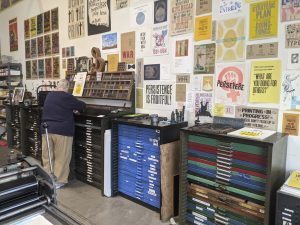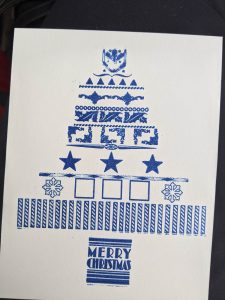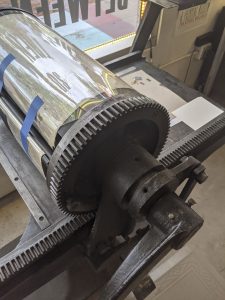Man Cave Conversations
Man Cave Conversations: Ode to Gutenberg
Man Cave Conversations is all about exploring new things that don’t fall under the Four Wheel Drive mantra but still might pique your interest. We think the history and how-to’s of many different topics fit well in a magazine with a 90% male readership. If we can get dirty, work with tools, and have a finished product to be proud of – we’ve hit all the buttons.

We’ve touched on everything from HAM radios to airboats, from reflux stills to powder coating, and so much in between. Today, it’s the printing press. Not what is used to print magazines and the like, but specifically the Letterpress.
The Letterpress was invented by Johannes Gutenberg in the 15th century, the first mechanical movable type.
Prior to that, block printing was most commonly used in printing. The Letterpress was the first press that allowed print to be duplicated rapidly. A significant advancement in sharing the written word.
For the next 600 years, Letterpress and her cousin’s Linotype and Lithography produced most written word copy. By the 1960’s, the rein of the Letterpress was coming to a close. With the advent of the computer, a new printing revolution was taking place.
Today, Letterpress studios can be found all over the country. The studios may be new, but the machines are not. Machines are often traded on eBay.
What is Letterpress?
 Letterpress is a printing technique using relief printing. The machines generally include a roller that places the paper on a block of type and applies pressure. Ink applied to the roller leaves an imprint.
Letterpress is a printing technique using relief printing. The machines generally include a roller that places the paper on a block of type and applies pressure. Ink applied to the roller leaves an imprint.
Some machines have each piece of paper set separately; others have mechanized rollers that pick up the paper and lay it down after printing – like the modern-day copier.
The difference is the process. A copier photographs the page to be duplicated; in Letterpress, the image is stamped.
Each plate is designed by hand with metal or wood type. Type can come in all sizes and fonts. Wingdings or images are common in letterpress type; it helps to create a full image. While posters and cards can be printed with a Letterpress, the resurgence in studios is generally related to wedding invitations. A pressed invitation adds a look and feel of importance to an event.
Cotton-based paper is often the paper of choice, although paper as thin as newsprint can be used in a letterpress machine. Cotton paper has long tendrils that hold the paper together well while undergoing the immense pressure needed to emboss the print.
Type high is always .918 inches. This standard is necessary so that the Letterpress machine makes an even print over the plate.
 Metal type is set one piece at a time, in reverse order. You begin with a 6 point slug, then add each piece of metal type in order. Often you will need additional filler lead to keep the piece in formation. Heavy-duty magnets are applied around the outsides to secure all the pieces of type.
Metal type is set one piece at a time, in reverse order. You begin with a 6 point slug, then add each piece of metal type in order. Often you will need additional filler lead to keep the piece in formation. Heavy-duty magnets are applied around the outsides to secure all the pieces of type.
Once the type is set, it is placed on the letterpress machine, ink is applied with a brayer, and the paper is rolled through. This process varies a bit from machine to machine.
Many letterpress printers hold workshops; it may be worth checking if your community has machines available for workshops. I’ve found letterpress workshops in Phoenix, Austin, and Minneapolis. Perhaps it’s a big city thing!


